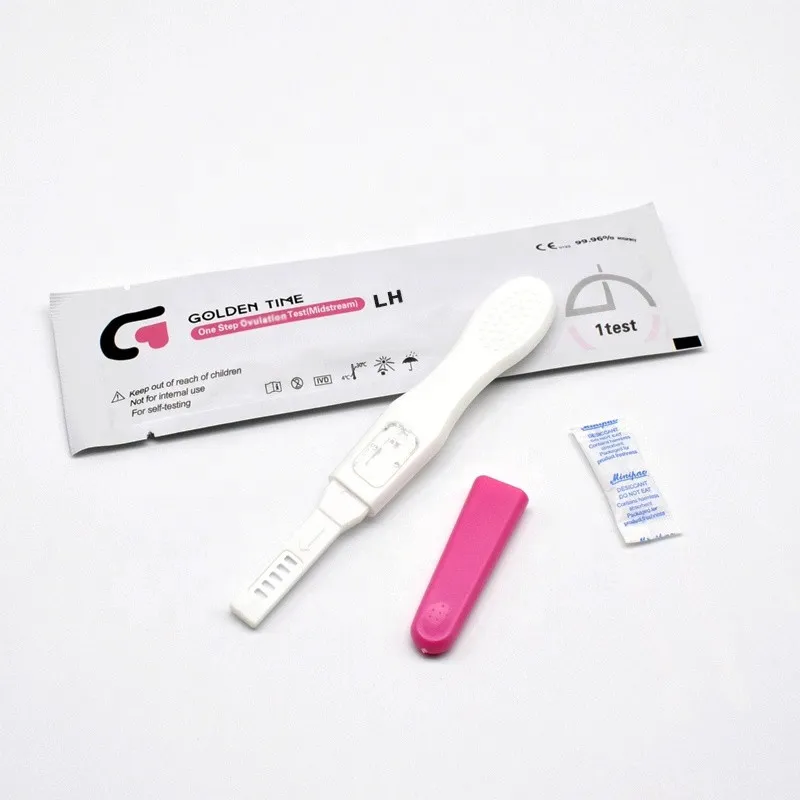Mar . 21, 2025 10:31 Back to list
Your Guide to Fertility Tests
Starting or expanding a family is a deeply personal journey, and understanding your fertility is a crucial step in the process. Whether you’re just beginning to explore your options or have been trying to conceive for a while, fertility tests can provide valuable insights into your reproductive health. From cheap fertility test options to more comprehensive assessments, this guide will walk you through the types of fertility tests available and help you make informed decisions about your future.

Why Consider Fertility Tests?
Fertility testing can help you:
Understand your reproductive health.
Identify potential issues early.
Make informed decisions about family planning.
Explore treatment options if needed.
Whether you’re looking for a cheap fertility test or a more detailed analysis, there’s an option to suit every need and budget.
Types of Fertility Tests
There are several types of fertility tests designed to assess different aspects of reproductive health. Here’s a breakdown of the most common options:
1. At-Home Fertility Tests
What They Do: These tests measure key hormones like FSH (follicle-stimulating hormone), AMH (anti-Müllerian hormone), and estrogen to provide insights into ovarian reserve and overall fertility.
Pros: Convenient, affordable, and private.
Best For: Women who want a quick, cheap fertility test to start their journey.
2. Ovulation Predictor Kits
What They Do: Track luteinizing hormone (LH) levels to predict ovulation and identify your most fertile days.
Pros: Easy to use and widely available.
Best For: Couples trying to conceive naturally.
3. Semen Analysis
What It Does: Evaluates sperm count, motility, and morphology to assess male fertility.
Pros: Provides critical information about male reproductive health.
Best For: Men who want to understand their fertility status.
4. Blood Tests
What They Do: Measure hormone levels like FSH, LH, progesterone, and testosterone to assess reproductive health in both men and women.
Pros: Comprehensive and accurate.
Best For: Individuals seeking a detailed fertility evaluation.
5. Ultrasound Scans
What They Do: Examine the ovaries, uterus, and fallopian tubes to detect issues like polycystic ovary syndrome (PCOS) or blockages.
Pros: Provides a visual assessment of reproductive organs.
Best For: Women with suspected structural or hormonal issues.
6. Hysterosalpingography (HSG)
What It Does: Checks for blockages in the fallopian tubes and abnormalities in the uterus.
Pros: Identifies potential barriers to conception.
Best For: Women experiencing unexplained infertility.
Affordable Options: Cheap Fertility Tests
If you’re looking for a budget-friendly way to start your fertility journey, consider these cheap fertility test options:
At-Home Hormone Tests: Affordable and easy to use, these tests provide a snapshot of your fertility.
Ovulation Predictor Kits: A cost-effective way to track your fertile window.
Basic Semen Analysis: Often available at a lower cost through clinics or at-home kits.
While these tests are more affordable, they still offer valuable insights and can be a great starting point.
When to Consider Fertility Testing
You’ve been trying to conceive for over a year (or six months if you’re over 35).
You have irregular periods or known reproductive health issues.
You’re planning to delay pregnancy and want to understand your fertility status.
You’re curious about your reproductive health and want to plan for the future.
Next Steps: Taking Control of Your Fertility
Understanding your fertility is empowering, and there’s no one-size-fits-all approach. Whether you start with a cheap fertility test or opt for a more comprehensive evaluation, the key is to take the first step.
Explore our range of fertility testing options today. From at-home kits to professional consultations, we’re here to support you on your journey to parenthood.
Your future starts now—take control of your fertility today!

